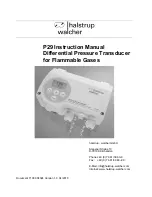
RECEIVE SETTINGS
•
RF gain
is normally left at (-0). Reducing RF gain may be useful in some strong-sig-
nal conditions.
•
SQL
: Squelch is used to mute the receiver until a signal appears. The control
adjusts the signal threshold required for squelch to “open,” unmuting the receiver.
•
IF DSP
: Virtual Intermediate Frequency: Specifies the Mode of the Receiver.
ENABLE:
This is the operating mode, utilizing all DSP features of the radio. This
mode uses a virtual Intermediate Frequency, which is offset from the operating
frequency by a few kHz. This is similar to ‘homodyne’ technology.
DISABLE:
When IF is disabled, the radio operates in simple Direct Digital Conversion
mode, and has soft reduced performances.
•
FILTER
: DSP filter tuning functions (LF/HF) The (LF/HF) control is used to shape the
TX-500’s receive filter passband. In general, a narrow passband reduces interference
(QRM) and noise (QRN), while a wider passband improves fidelity. In voice modes,
CW and DIG modes long push
E
selects low-cut (LF) and high-cut (HF) fre-
quency. Pushing
E
select number of filter (1-4)RX, (1-2)TX. These functions
remove low- or high-pitched interfering signals. Reducing the width or shifting
the passband may attenuate an interfering signal above or below the desired one.
•
PRE/ATT
: Preamp
L
and Attenuator
D
turns on the RF preamp. It should
be used only when signals are very weak. Preamp gain can be set on a per-band
basis.
D
turns on the 20-dB RF attenuator, which can protect the receiver from
strong interfering signals.
•
NR
: Noise reduction removes random background noise (hiss or static). It has a
characteristic “hollow” sound. Higher settings may attenuate weak signals. Tap
N>
NR
turns on noise reduction, holding
N>
NR
and displays its setting, which
can be adjusted using the knob
M
TUNE/MULTI
. Tap return to exit the setting display.
Tap
N>
NR
again to turn noise reduction off.
•
NB
: Noise blanking
C
can eliminate repetitive noise such as that from power
lines, appliances, and vehicle ignitions systems. The NB setting is adjusted in the
same way as NR (see above).
•
NF
in SSB and AM modes,
B
turns on auto-notch, which locates and sup-
presses one or more carriers automatically, Push
N>
NF to enable or disable
the Notch Filter.
•
TONE (Transmission tone)
: The transceiver will transmit a single tone. Pressing
“Tone”
N>
TONE
again puts the transceiver in RX mode. A long press of
TONE
displays the selection mode
NORMAL
(1000 Hz) or
DUAL
(two tones of 1000 Hz and
2000 Hz). The transmission power is approximately 50%.
Basic Operations
9


































